Verizon Fios and IPV6, Which Settings Work?
-
Thanks for your posts. I've been having the same issues on my network and your settings helped me to figure out what I was doing wrong.
I'm up and running now also.
Perth Amboy, NJ
-
Just posting this here to save anyone a little time...
@MikeV7896 has an awesome frequently-updated sheet on OneDrive that is tracking the rollout. No sense in banging your head against the wall if your area's CO hasn't been lit up yet.
-
-
To your point, I do not see my area on the list. I can confirm, this started working today. let me know what info you need to update it to my area also.
I'm in Perth Amboy, NJ
-
@slatterly6523 It's not my list - I can't edit it. I would message MikeV over on the DSLR thread and let him know.
-
Yeah, tracking the rollout is a bit out of scope for here (since this is the pfSense support forum)... post in the DSLR thread and I'll get your CO added to the list.

-
C Cyth referenced this topic on
-
B betapc referenced this topic on
-
Hi everybody, this is an update, today I did a clean installation of pFSense, out of the box I had IPV6 without any issues, I didn't have to change any settings, I have full access. Then I upgraded to pFSense plus, same thing I didn't have any issues, full IPV6 working out of the box.
The size of the IPV6 is 56 automatically Verizon provided the size to pFSense, again I didn't change any settings.
The only strange thing is the size of the IPV6 change when I upgraded to pFSense plus. I didn't have the time to figure out what happened.
So far is working.
I think Mike is right, looks like some areas just started rolling out dual stack and there is some technical issues in the implementation, couple more weeks of patience for some areas, I was waiting for Verizon implementation of dual stack for almost 10 year.
Thanks everyone for your posts, they were really helpful.
-
@betapc Are you able to share full screenshots of the Router Advertisements page? What, if anything, do you have checked? I have everything set up the same as your screenshots, but for whatever reason IPv6 traffic is not passing. I even found that spreadsheet that says that my CO should be live (since the end of July). Everything was working with Hurricane Electric before, so not sure if I'm missing something here.
-
@jdefuria Is frustrating to make it work, I still have the same setting, still working. The only thing I change was the router advertisement mode to assisted because they can do both DHCPv6 server and/or stateless auto-configuration.
So far is working same settings, the only issue if you release the IP address to get a new one take time, you have to reboot pFSense.
The problem with Verizon support they don't tell you if there is a issue on their side, they do all this rebooting multiples times and that's it. They sent me a new Verizon router that was their solution, and even with the new router didn't work because they were having issues with IPv6, couple days later just work, after I spend hours trying to make work. I tested my ONT if I was getting an IPv6 was with the Verizon router before connecting my pFSense.
If you have a Verizon router connected directly to you ONT and then you login into router setting and you can see if you are getting the IPv6 address and if you connect a laptop and then you test it with IPv6 test web page, if that doesn't works is because Verizon still have issues. If the laptop works and past the IPv6 test, so something is not right with the pFSense configuration.
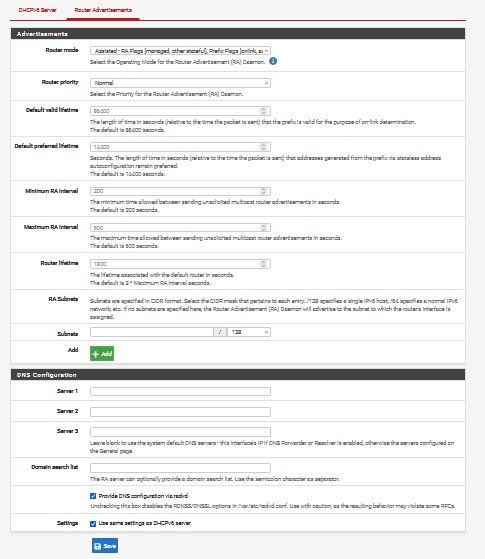
-
@betapc thanks for posting- I will have to find a time to plug in directly to to ONT and see. I just found the thread on DSLreports where the spreadsheet comes from, and it looks like someone else posted that they are having issues at the Marlton, NJ CO. I wonder if it’s not really “on” here yet!
-
@jdefuria I spend hours with FiOS customer support, I did clean installation of pFSense. Spend days trying to configure everything on pFSense and nothing, until I figure out that was FIOS problem. The worst part customer service don't confirm or denied if they are providing IPv6 in the area or if is working without issues.
The settings I post still working with out issues.
The only problem is traffic shaping, I still unable to configure it right, my bufferbloat is really high. I tired all the settings and nothing.
I have IPv6 connection speed and connection are good. All my devices are working properly so far.
-
@jdefuria I forget mentioning, for all the testing and configuration I used a different DNS, because Verizon DNS for IPv6 is not really good, there is some issues too, is not giving good responses, I used Google and 1.1.1.1 for both IPv6 and 4.
Google
2001:4860:4860::8888
2001:4860:4860::88441.1.1.1
2606:4700:4700::1111
2606:4700:4700::1001 -
@betapc said in Verizon Fios and IPV6, Which Settings Work?:
The only problem is traffic shaping, I still unable to configure it right, my bufferbloat is really high. I tired all the settings and nothing.
I am still trying to tweak my configuration, but I have managed to raise my grade on the Waveform Bufferbloat Test from
DtoBlike this:(Note: I have 200/200 service. You will need to change the numbers if you have different speeds. While Verizon often overprovisions the speed settings (I've occasionally gotten 250Mbps in some speed tests), many forums suggest subtracting 5 from your official speed, as I've done here.)
IMPORTANT: The screenshots below are older and show a "Queue Length" of
3000. I found that4000works even better for me, but5000is too high. You may need to experiment to find the best number for you.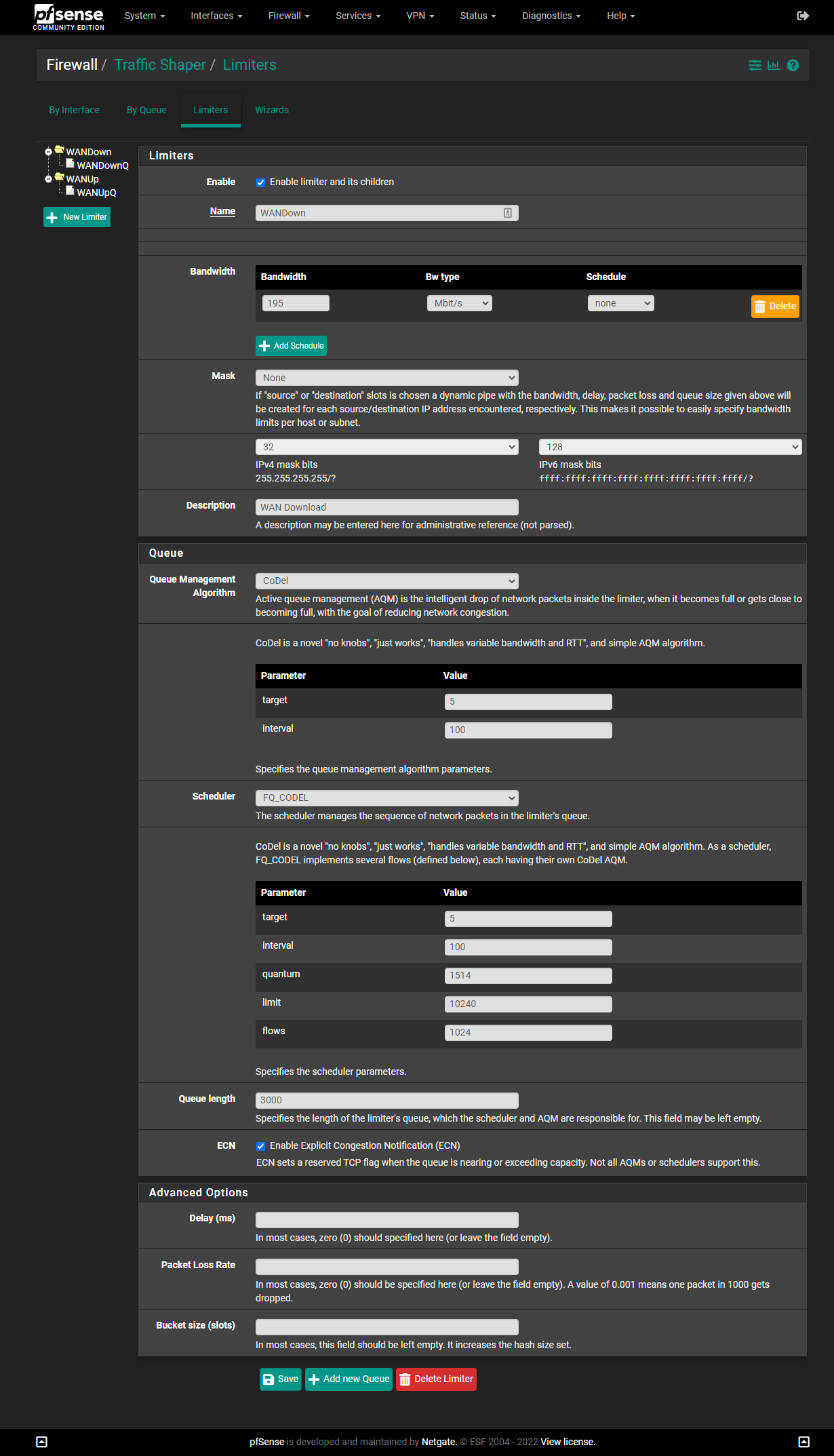
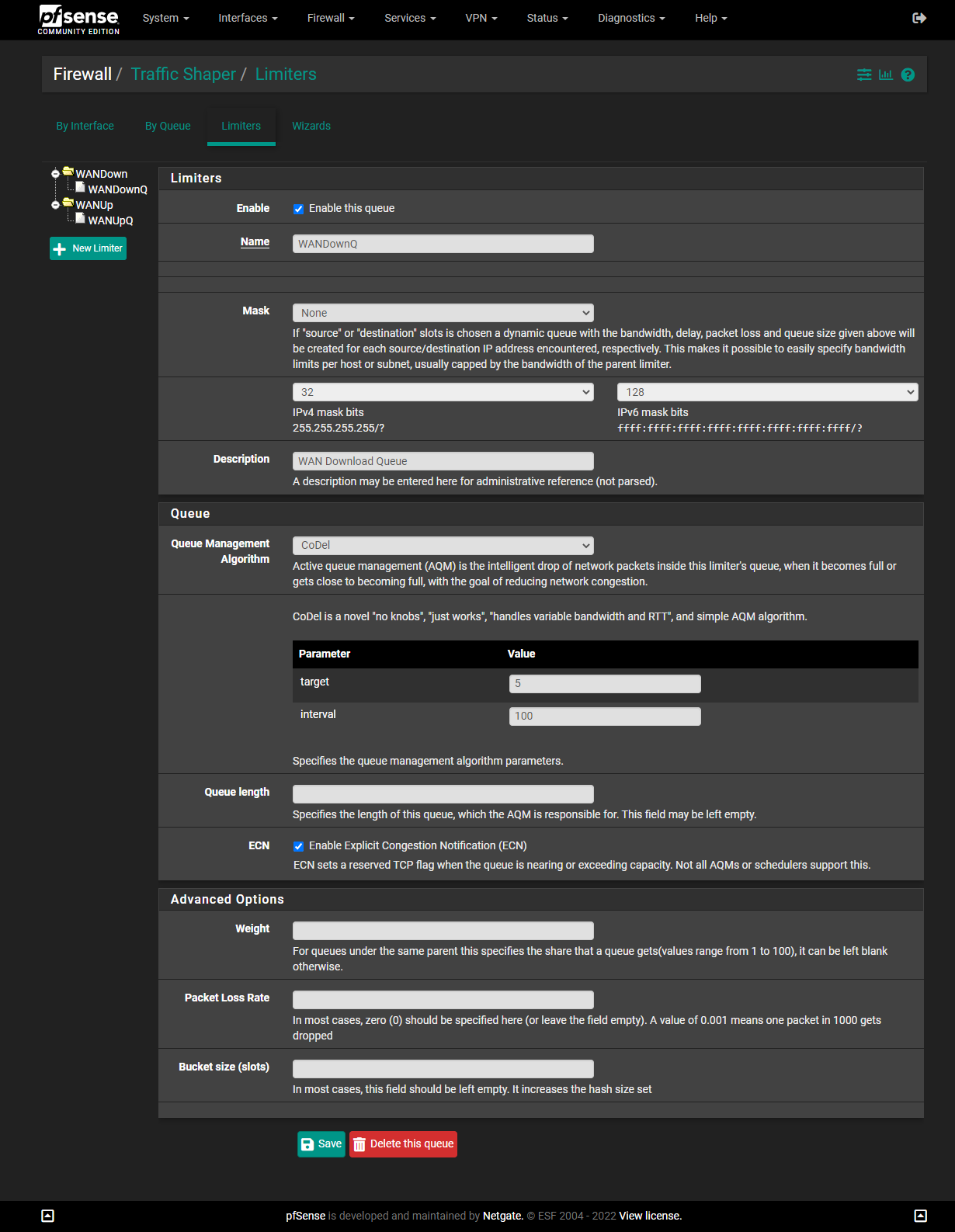
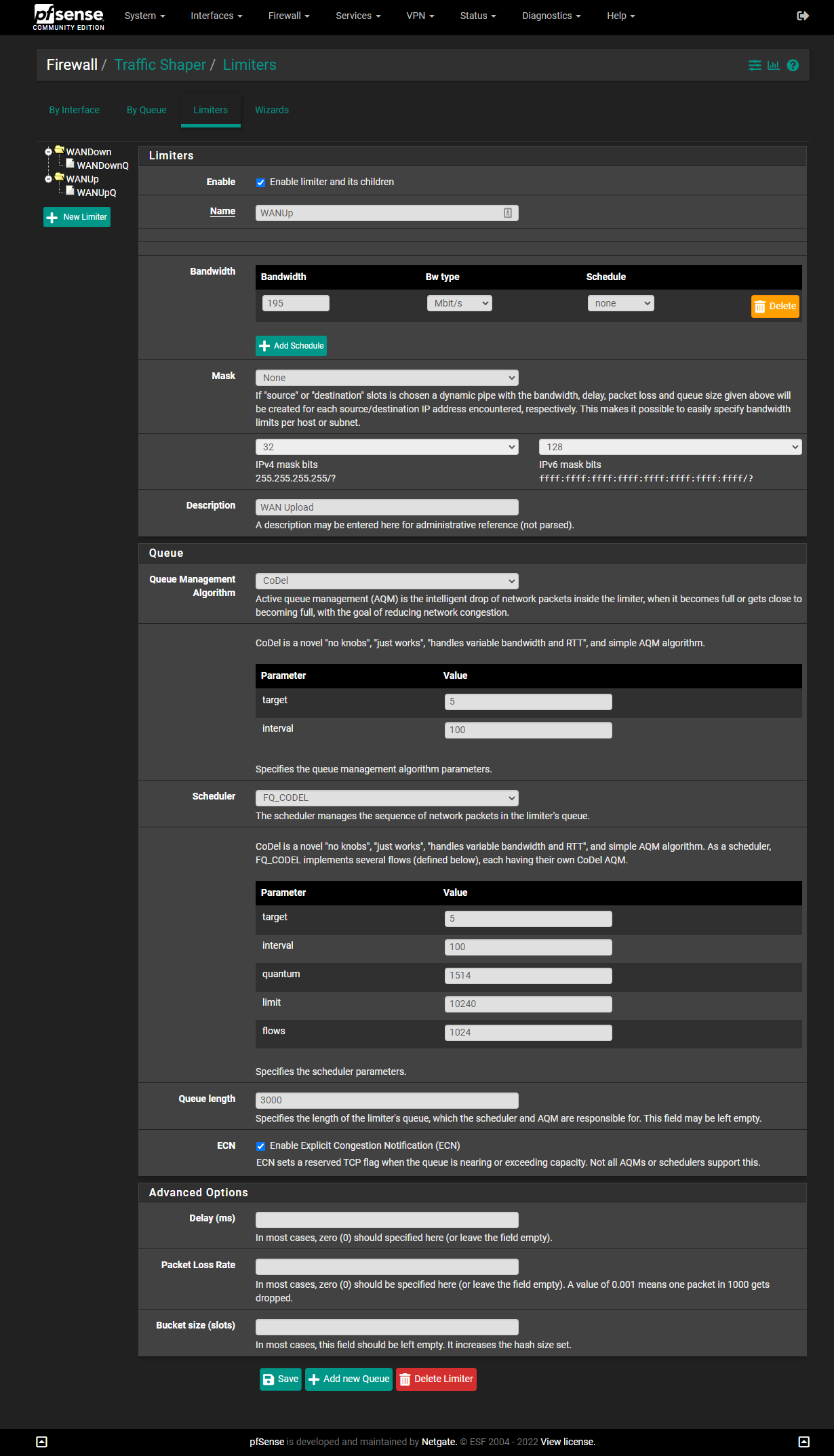
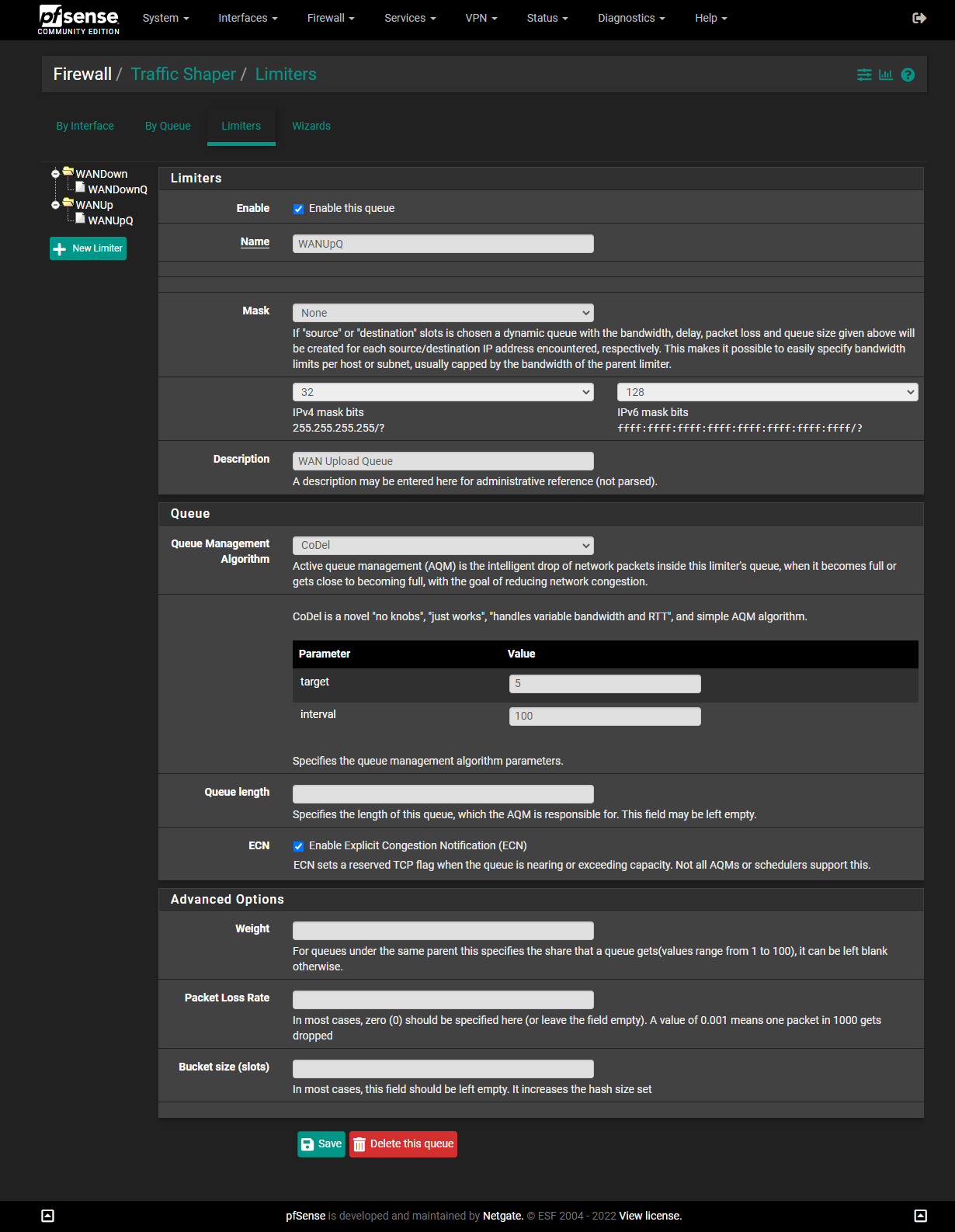
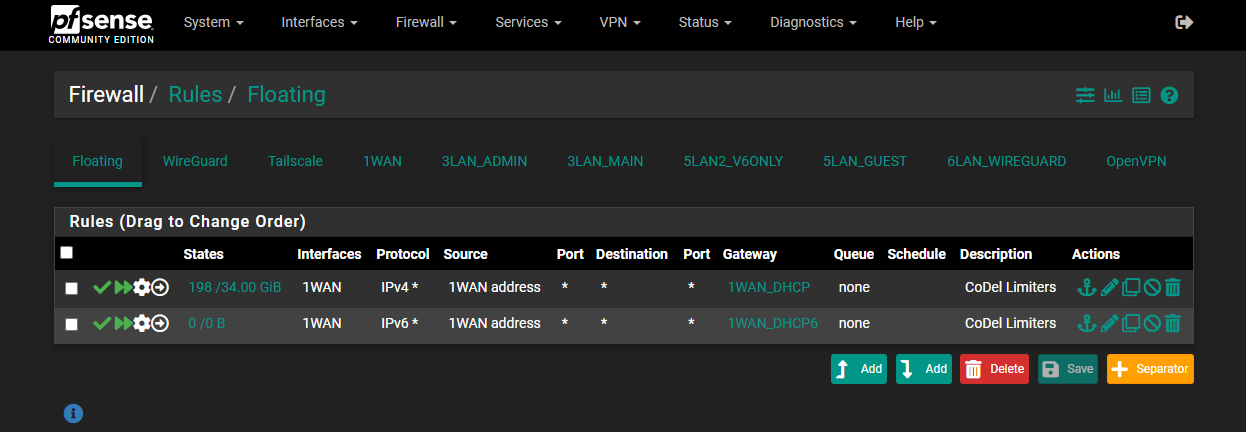
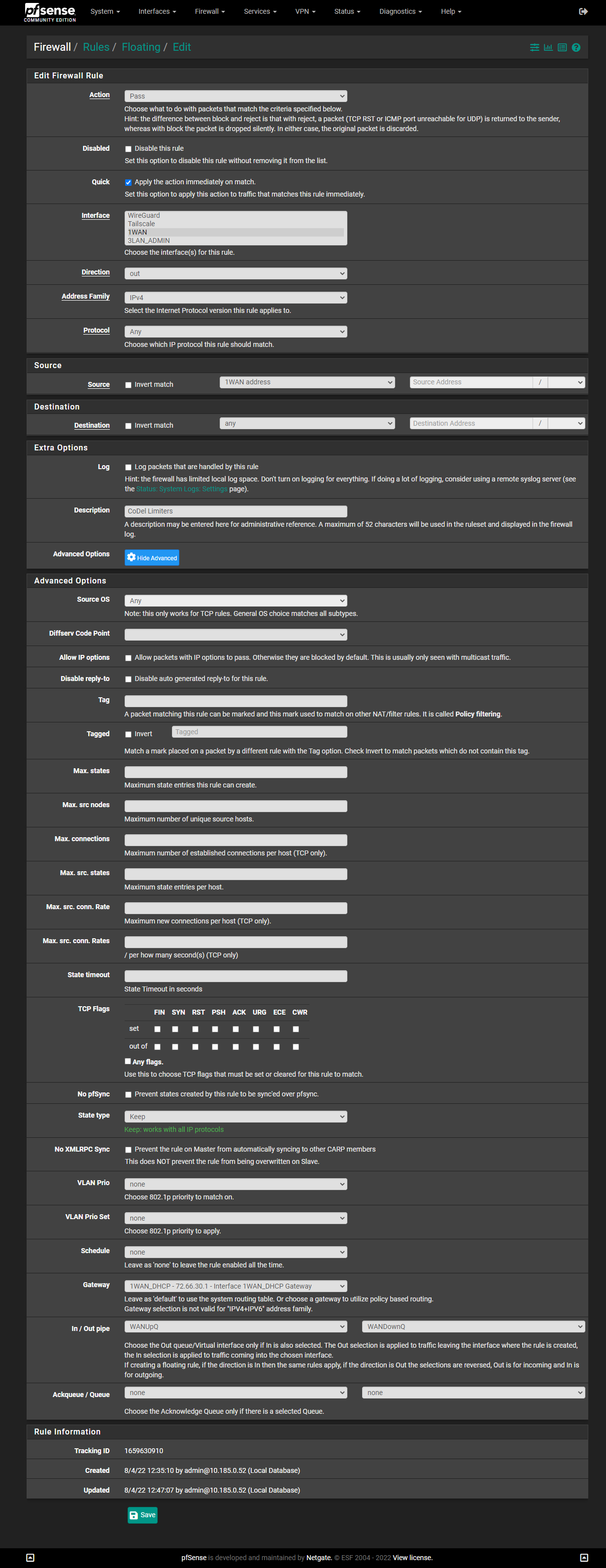
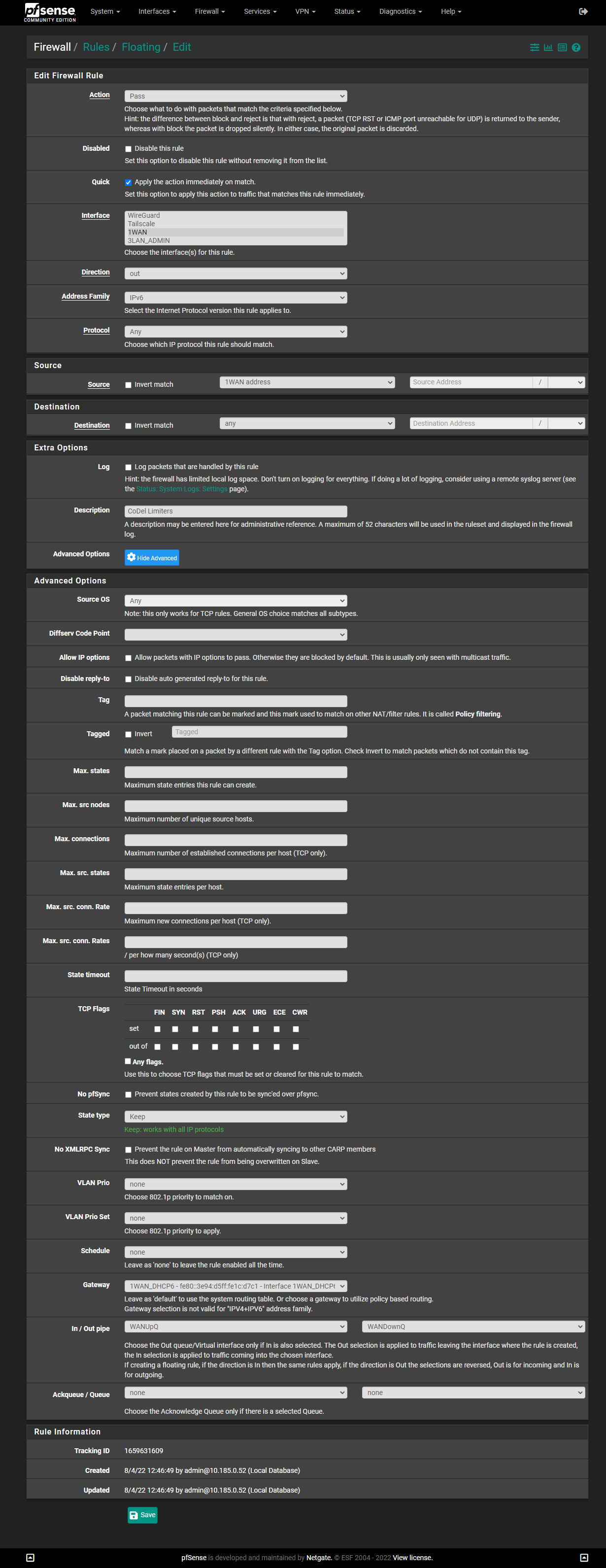
-
@betapc Your troubleshooting tip of asking to plug right into the ONT does indeed show that IPv6 is not on at my CO, and I tried at my friends house in a different subdevelopment (she thought I was crazy) and I do not believe MARLNJMA is online with IPv6. @MikeV7896 are you the one that updates this spreadsheet?
-
@jdefuria I am on the list. My didn't work for the first week. Can be coincidence, I also left my ONT unplug all the cables and from electricity over night, that is another way to release all the IP address, usually 3 hour unplug FIOS release the IP and provided new one. I leave over night just to tried. You can give it a tried, you never know.
The roll over had been slow and no perfect. Don't tried to hard maybe is not you, is FIOS.
-
@kohenkatz Thanks for the info, I am on pFSense Plus 22.05, I did use your setting and the whole system stop, because Queue Management Algorithm can not be CoDEL, need to be Tail Drop and the Scheduler FQ_CODEL on pFSense Plus 22.05. When I test those setting on pFSense CE work good as soon upgrade I have the issues. I applied this documentation https://docs.netgate.com/pfsense/en/latest/recipes/codel-limiters.html thanks to @luckman212, still no luck. I will just wait if more people have the same issue or if the problem is with Verizon. That will be another post.
-
Recently upgraded to a pfsense router (v2.6.0). I have Verizon FIOS. The previous router (EdgeRouterX) never obtained an IPv6 even though DHCPv6 was enabled on the WAN interface. However, after enabling DHCPv6 on my WAN interface with pfsense, I noticed it obtained an IPv6 address. Afterwards, I enabled "Track Interface" on the LAN interface, the "DHCPv6 Server" service, and "Router Advertisements" (and setting Router mode to "assisted". everything worked.
pfsense is plugged directly into the external ONT and it a older model (4+ year old).
-
For those of you on consumer FiOS plans, how large of a block are you getting on IPV6? /64 or /56? Or maybe even larger?
Can you use DHCPv6 or are you stuck with SLAAC?
Are they static or do they change? With the new address space available in IPV6, there should be no reason anyone gets a dynamic IP address anymore, unless they are just being jerks and randomizing the IP on purpose to make people pay for business plans.
I'm still wrapping my head around how addressing works on a LAN when everything has to be a globally unique IP, especially if the ISP changes block addresses on me.
With NATed IPV4 it is great. I can set my own local static IP's in a private address range, and never have a problem, but now in a globally unique 1:1 world, my IP address has to match my ISP's block allotment.
Does this mean that static LAN IP's are pretty much dead, unless your ISP grants you a static block?
Sigh.
It's really frustrating to have to mess around with this stuff when IPV4 was working perfectly.
We certainly needed the larger address space, but the IPV6 implementation is a bloody nightmare. If it were up to me, I'd send the whole shebang back tot he IETF and have them start over with a focus on usability, human readability, and independence between LAN IP addresses and globally unique IP addresses.
-
@mattlach Verizon is giving me a /56. IPv6 has a feature called "Prefix Delegation". Pfsense supports that under DHCPv6. Prefix delegation allows the specification of the end of the IPv6 address. You specify the end address for under DHCPv6 and therefore still have a quasi static addresses. By default Pfsense assigns a range like ::1000 to ::2000. But you can still have static assignments for the DHCPv6, too
Additionally, you can use the fd00 and NAT the IPv6 connection. But, then again that really does go against the purpose of IPv6.
-
@mattlach said in Verizon Fios and IPV6, Which Settings Work?:
Can you use DHCPv6 or are you stuck with SLAAC?
ISPs generally use DHCPv6-PD. SLAAC is normally used on the LAN.
Are they static or do they change? With the new address space available in IPV6, there should be no reason anyone gets a dynamic IP address anymor
With IPv6, the prefix is usually stable, provided you select Do not allow PD/Address release. I've had my prefix for years and it has even survived replacing my modem and the computer I run pfSense on. On the other hand, some ISPs are stupid.
I'm still wrapping my head around how addressing works on a LAN when everything has to be a globally unique IP, especially if the ISP changes block addresses on me.
Even if they change the prefix, the addresses will still be globally unique. However, it will mess up DNS. You can use Unique Local Addresses to avoid this issue on your LAN.
Does this mean that static LAN IP's are pretty much dead, unless your ISP grants you a static block?
My addresses, both IPv4 and IPv6 are virtually static. Also, on IPv4, the host name is based on modem and router MAC addresses and so change only with hardware change. My IPv6 prefix doesn't even change then.
It's really frustrating to have to mess around with this stuff when IPV4 was working perfectly.
If you had to use NAT, it wasn't working perfectly. You are using a hack that causes it's own problems.
If you want to really learn about IPv6, I can recommend "IPv6 Essentials" from O'Reilly.